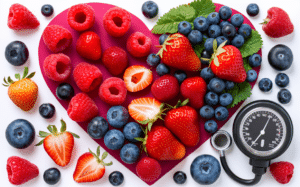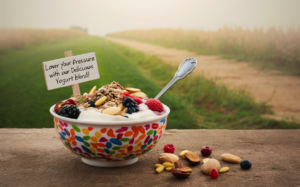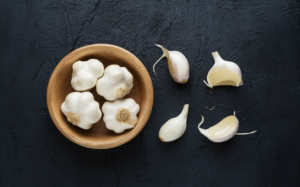Hypertension is an increasingly prevalent health concern that can have serious repercussions if left unmanaged. While medications may help control this problem, adding certain foods into your diet may also help naturally decrease or regulate it – here are a few foods which have proven their blood pressure-reducing abilities:
Leafy Green Vegetables:

Leafy green vegetables like spinach, kale, arugula, collard greens and others are nutritional superstars that can offer benefits to helping control blood pressure. Here’s why they work:
Potassium Powerhouse: Leafy greens are packed with potassium, an essential mineral for blood pressure regulation. Potassium helps your kidneys flush out excess fluid and relax blood vessel walls to lower your blood pressure, leading to lower BP overall.
Magnesium Rich: Leafy greens contain plenty of magnesium, an essential mineral for relaxation of muscles such as your heart muscle and smooth muscle lining your blood vessels, leading to healthy blood pressure levels.
Nitrate Boost: Greens are an excellent natural source of nitrates, which your body converts into nitric oxide, an extremely potent vasodilator which widens blood vessels to improve circulation and potentially lower blood pressure.
Leafy Greens Provide a Fiber Boost: Leafy greens contain plenty of dietary fiber that is beneficial in weight management and cholesterol reduction – two factors which significantly impact blood pressure levels.
Berries:

Berry foods like blueberries, raspberries and strawberries offer an appealing way to support healthy blood pressure levels. Here’s why:
Berries Are Packed With Anthocyanins: Berries get their vibrant hue from naturally occurring pigments known as anthocyanins, antioxidants linked to improved blood vessel flexibility and possibly lowering blood pressure.
Source of Potassium: Berries are rich sources of potassium, an essential mineral that works to combat the adverse effects of sodium in our bodies. Potassium helps relax blood vessels and flush away excess fluid, leading to an overall reduction in blood pressure levels.
Berry Fiber Boost: Berries provide an important source of fiber, essential for weight management and cholesterol regulation – factors which impact blood pressure levels.
Nitrates for Vasodilation: Some berries, such as blueberries, contain nitrates that the body can convert into nitric oxide for improved blood flow and vasodilation. Nitric oxide acts as a vasodilator to widen blood vessels for improved circulation.
Yogurt:

While more research needs to be conducted, some studies indicate that yogurt could have a beneficial impact on blood pressure for those living with hypertension. Here’s what we know:
Calcium and Potassium Supplement: Yogurt provides both calcium and potassium – essential minerals for blood pressure regulation. Potassium counteracts sodium’s effects while calcium promotes healthy vessel function.
Beneficial Bacteria: Yogurt contains live bacteria (probiotics) which may provide benefits to our gut health, with new research suggesting a possible link between gut bacteria balance and blood pressure regulation.
Studies on yogurt’s benefits often involve its consumption as part of an overall balanced diet, such as DASH (Dietary Approaches to Stop Hypertension). This underscores its significance when combined with other blood-pressure-friendly foods like DASH.
Garlic:

Garlic, a staple in kitchens worldwide, may offer more than just delicious flavor. According to research, garlic could play an integral part in helping maintain healthy blood pressure levels and supporting their control. Here’s how:
Allicin: the Star Compound: When garlic is crushed or chopped, allicin is released and believed to be responsible for many of its potential health benefits, including an antihypertensive effect on blood pressure.
Relaxing Blood Vessels: Allicin may help relax blood vessels by increasing production of nitric oxide, which acts as a vasodilator (widens blood vessels). This allows for smoother blood flow and can even lower blood pressure.
Reducing Inflammation: Chronic inflammation is often the source of high blood pressure. Garlic’s anti-inflammatory properties may help limit this impact and possibly help alleviate it.
Antioxidant Power: Garlic contains powerful antioxidants which can protect the body against damaging compounds found within, which could otherwise wreak havoc on blood vessels and contribute to high blood pressure.
Other foods:
Apart from above options, below are few more which are good to lower your blood pressure–
Fatty Fish: Salmon, mackerel and sardines are great sources of omega-3 fatty acids which have been shown to have a positive impact on blood pressure levels. Omega-3s help reduce inflammation while improving vessel function.
Nuts and Seeds: Nuts and seeds such as almonds, walnuts and flaxseeds contain beneficial fats, fiber and minerals such as magnesium and potassium that may help manage blood pressure levels.
Whole Grains: Whole grains such as oatmeal, quinoa, and brown rice contain high concentrations of fiber which has been shown to help lower blood pressure by decreasing inflammation and improving vessel function.
Beetroot: Beets contain high concentrations of nitrates, which have the power to dilate blood vessels and improve circulation resulting in lower blood pressure levels.
Bottom-line:
Integrating these foods into your diet along with regular exercise and maintaining a healthy weight, can help naturally lower and manage blood pressure levels. While they can be useful, these should never replace prescribed medication or medical treatments without first consulting with healthcare provider. Furthermore, eating healthily while leading an active lifestyle will promote overall cardiovascular health while lowering hypertension risk factors and its complications.
FAQs:
Q1: What is the fastest way to lower blood pressure naturally?
While dietary changes are crucial, there’s no single food that offers an instant fix. A combination of leafy greens, berries, yogurt, garlic, along with a whole-foods diet, regular exercise, and stress management is the most effective natural approach.
Q2: How much leafy greens should I eat to lower blood pressure?
The DASH diet recommends 4-5 servings of vegetables daily. One serving is about a cup of raw leafy greens or half a cup of cooked greens.
Q3: Can I eat any type of yogurt to lower blood pressure?
Choose plain, unsweetened yogurt (low-fat or fat-free) to avoid added sugars. Flavor it with berries or a touch of honey if needed.
Q4: Does garlic help lower blood pressure? If so, how much should I eat?
Studies suggest potential benefits, but the amount needed for a significant effect is unclear. Incorporating garlic regularly into a healthy diet is a good strategy. Focus on fresh garlic for maximum benefits.
Q5: Which berries are best for lowering blood pressure?
All berries are excellent choices, but blueberries, strawberries, and raspberries are packed with beneficial antioxidants called anthocyanins. Enjoy a variety for the most comprehensive benefits.
Related Posts:
The Ultimate Diet Plan for Novice Health Enthusiasts
Benefits Of Gluten Free And Dairy Free Diet
The DASH Diet: Lowering Blood Pressure and Improving Health
